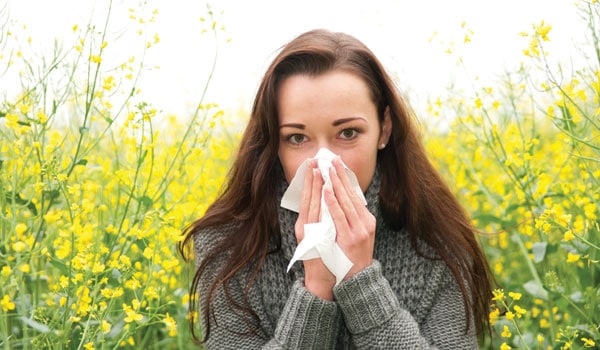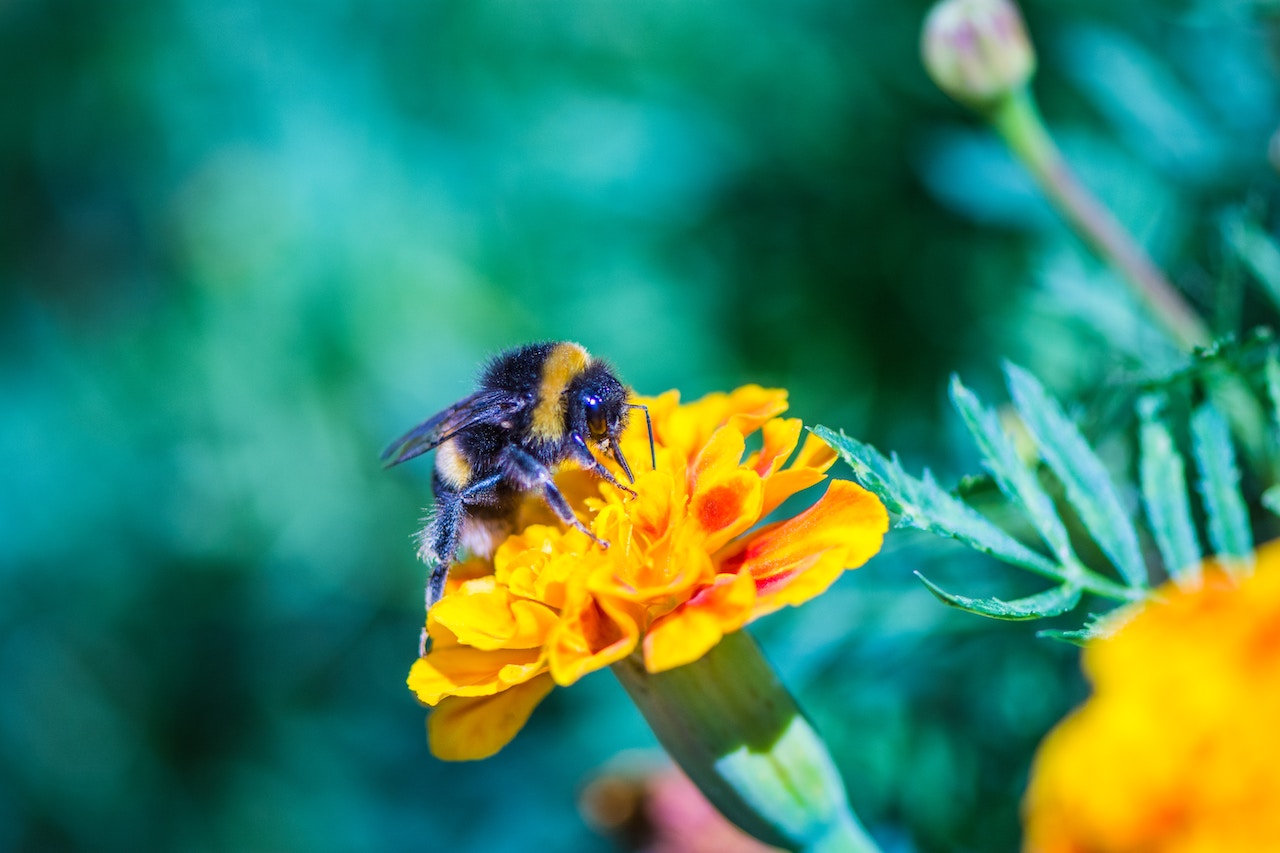Hay fever, or seasonal allergic rhinitis, is an allergic reaction to pollen and other airborne allergens such as fungal spores. Most people who suffer from hay fever (around 95%) are allergic to grass pollen and many (about 25%) are allergic to tree pollen. Hay fever is a result of our immune system’s overreaction to innocuous antigens such as pollen, causing the unpleasant itching, redness, inflammation and other hay fever symptoms.
HAY FEVER AND ITS SYMPTOMS
The body’s reaction to pollen is to produce histamines. Normal amounts of histamines in your brain are good – they keep you alert, attentive and awake. But, when there are too many, they produce the various symptoms common to hay fever sufferers including sneezing, a runny nose, nasal congestion, itchy eyes, watery eyes, streaming eyes, swollen eyes, itchy nose and throat.
Put more simply, everyone can tolerate a certain amount of pollen, but there is a sensitivity level above which an allergic reaction occurs, triggering the release of histamines.
Common hay fever symptoms include sneezing, a runny nose, a stuffed up nose, itchy and watery or streaming eyes, nasal congestion and a general stuffed up feeling in the nose and throat. Some people also experience itching around the face and mouth including an itchy mouth, itchy roof of mouth, and a burning sensation in the throat. Headaches and wheezing can also occur.
Hay fever symptoms may also include an overall achy feeling, or build-up of pressure in the entire face area. The sinus area is often the most painful. Constant nose rubbing and blowing can also leave sufferers with skin irritation and sensitivity. All of this can lead to tiredness, fatigue and exhaustion. Hay fever can also affect how you sleep and cause sleep disturbance and difficulty getting to sleep. These symptoms can in turn zap your energy levels leaving you feeling low and sluggish. Chronic hay fever sufferers may experience more severe or prolonged symptoms.
TIPS AND TREATMENTS
Organic, Drug-Free Allergen Barrier Balms
Allergen Barrier Balms are applied around the rim of the nostrils and bones of the eyes and work by trapping airborne allergens such as pollen before they enter the body. Everyone can tolerate a certain amount of allergen in their body, but once this level is exceeded – known as your ‘trigger level’ – an allergic reaction occurs. HayMax organic, drug-free allergen barrier balm has been proven to trap dust allergens, pet allergens and over a third of pollen before it enters the body. It is suitable for children and pregnant and breastfeeding women.
Natural Antihistamines
Antihistamines are a common hay fever remedy as they counteract the effects of the excess histamines. Natural antihistamines are available.
Butterbur is a herbal extract believed to have an antihistamine-like effect on hay fever symptoms. A 2005 medical study found that butterbur was as effective as antihistamines in treating hay fever symptoms. However, people allergic to ragweed or chrysanthemum should avoid butterbur and it should be consumed carefully as it can cause indigestion, fatigue, vomiting or constipation. Butterbur extract is available in capsules.
Quercetin is thought to limit the release of histamine. As well as being found naturally in many foods, such as red onions, kale, cherry tomatoes, broccoli, blueberries and apples, it can also be taken in a capsule. NB Quercetin is not recommended during pregnancy.
Aloe Vera has mild antihistamine properties. The juice can be drunk diluted in water.
Natural Eye Drops
Eye drops are another common hay fever remedy. There are natural eye drops available which contain a herb called Euphrasia (more commonly known as Eyebright). This relieves inflammation and swelling and is thought to be a helpful allergy relief remedy.
Nasal Filters and Washes and Sneeze Beam
The nasal filter is a disposable filter that is stuck under the nostrils to block pollen and other allergens from entering the body by stopping them being inhaled.
Nasal washes – several saline (salt) washes and rinses are available.
The sneeze beam uses phototherapy to combat allergy symptoms. Two light beams are inserted into the nostrils and they block the receptors which react to pollen.
Vitamin D and Immune Support Supplements
Vitamin D – boosted vitamin D levels have been linked to helping reduce allergy development.
Immune boosting wellness formulae with natural ingredients which have a history of benefits to help support the immune system, such as Bee Prepared Immune Support which has clinically researched actions that help support the immune system.
Acupressure Band
Based on acupressure, a non-invasive form of acupuncture, achieved by applying physical pressure of hands, elbows, feet or devices to the acupuncture points. The band is a non-invasive, natural way to treat allergy symptoms. It uses acupressure to target key pressure points on the body associated with allergy symptoms. The band is worn on the elbow, one of these pressure points.
PLANTS AND HERBS THAT MAY HELP WITH HAY FEVER
There are many plants, herbs and components of plants and herbs that may help with hay fever or pet or dust allergy.
Calendula and Chamomile tea are both reputed to relieve hay fever symptoms. Some herbalists suggest smearing chamomile and lemon oil on a tissue and inhaling.
Ginger, Peppermint and Green tea are all said to reduce hay fever symptoms. Ginger and green tea work as natural anti-histamines whilst peppermint reduces congestion.
Ginkgo biloba is thought to decrease the body’s response to allergens while also increasing energy levels and circulation. It is usually taken in capsules.
Garlic can help reduce catarrh.
Horseradish is a pungent root vegetable which acts as a decongestant, helping to clear nasal passages. Grated fresh horseradish root adds a great kick to meals.
Liquorice root can ease inflammation and redness in the nose and is also believed to have anti-viral and anti-bacterial properties that can help boost the body’s immune response to hay fever, dust and pet allergies. It can be drunk as a herbal tea.
Reishi Mushrooms are thought to be rich in beta-glucans which positively affect the immune system and reduce inflammation. They also supposedly have anti-histamanic properties. Reishi mushrooms contain significant levels of vitamin D2. Boosted vitamin D levels have been linked to helping reduce allergy development.
Nettle – stinging nettle leaf may help reduce the symptoms of hay fever by acting as an anti-inflammatory. Nettle is available in capsule form and as a tea.
Turmeric Commonly used in Middle Eastern and Asian cuisine, turmeric is a spice containing curcumin, which has been found to have anti-allergy properties. Most often used in dried form, it can also be bought fresh. It looks similar to ginger root.
AROMATHERAPY
Aromatherapy is a traditional, natural way to help with a variety of ailments including allergy symptoms. High quality pure, natural essential oils with genuine ingredients are best, rather than a synthetic version which won’t bring the same benefits.
Roman chamomile or camomile is soothing and can lessen the reaction to pollen. Lavender is renowned for its healing, calming and soothing properties. Pine is strengthening and can help clear nasal congestion. Rosemary is uplifting and can help clear nasal congestion. Juniper is detoxifying. Eucalyptus is clearing. Carrier oils include sunflower, coconut and olive.
NATURAL HAY FEVER FIRST AID KIT
Many hay fever sufferers will tell you that nothing works, or that some remedies help, but nothing does the whole job. Or what worked last year doesn’t work this year. It is very frustrating.
The interesting thing about this is that many natural remedies can be complementary to each other. So if one helps, but doesn’t do the whole job, you may be able to try other remedies at the same time and get a better result. In other words, you can create a bespoke Natural Hay Fever First Aid Kit for the customer.
My ideal Natural Hay Fever First Aid Kit suggestion is an allergen barrier balm to help block the pollen, one (and only one) natural antihistamine to help combat the excess histamines, natural eyes drops to help relieve inflammation and swelling and one or more other natural products.
By Airborne Allergens Expert and Creator of HayMax Allergen Barrier Balm, Max Wiseberg





